Project Backyard: Pouring a Concrete Pad
“Do it right the first time, no matter the cost, because in the long run it will cost less to maintain.” ~ J
More often than not, ‘J’ approaches our projects with this philosophy in mind. Take our shed project for example. I wanted to drive to The Home Depot, purchase a prefab shed, plop it down on the grassy patch in our backyard that has been earmarked for “shed,” and call it a day! Turns out, it’s not that easy. In order to get the shed design I really want, we are going to need to build it ourselves… from scratch… essentially taking our project from bing-bang-boom-done, to nails, saws, tape measure, screws, wood, shingles, windows, eaves troughs… and of course a concrete pad.


It might seem unnecessary, but pouring a concrete pad is one of the best things you can do in order to ensure the strength of a shed. Again, it’s the “do it right the first time,” mind-set. A solid concrete footing will prevent the shed from shifting, sinking, or even moving from its base. The whole process was not overly complicated, and can be completed in a few steps:
Dig the Bed // Depending on how deep you would like your concrete pad, dig a hole 3-8 inches deep. Digging the bed for the gravel was not fun because of our “clay like” soil.
Fill with A-Gravel // After digging the bed fill it with A-gravel and use a plate tamper to get it nice and compacted. We had rented our tamper for a 2 days, so we went over it a few times the following day.
Construct the Forms // Using 2×4 or 2×6’s create a box on the inside of your bed. If the wood extends past the top of your bed you may want to use stakes to keep the wood securely in place – you don’t want the concrete to push the boards out of shape. We used 7+ stakes on each side.
Rebar // Using rebar in the concrete will help add strength, so if the slab does crack it will keep everything aligned.
Pour in Your Concrete & Level // It may take several wheelbarrow trips, but you eventually fill this form up! Use your shovel to work out any air bubbles. Using a 2×4, skim the top of the pad to remove excess concrete and to level. Using a bull float, smooth the surface. If you like a brushed look, use a broom to add texture. Finish the edges with an edging trowel. Have a beer because you are almost done.
Add Your Initials // These will be our little secret…

Now that the pad is in, ‘J’ and I are putting the finishing touches on our engineered drawings of the shed and pulling together our materials list… and the real fun is about to begin!


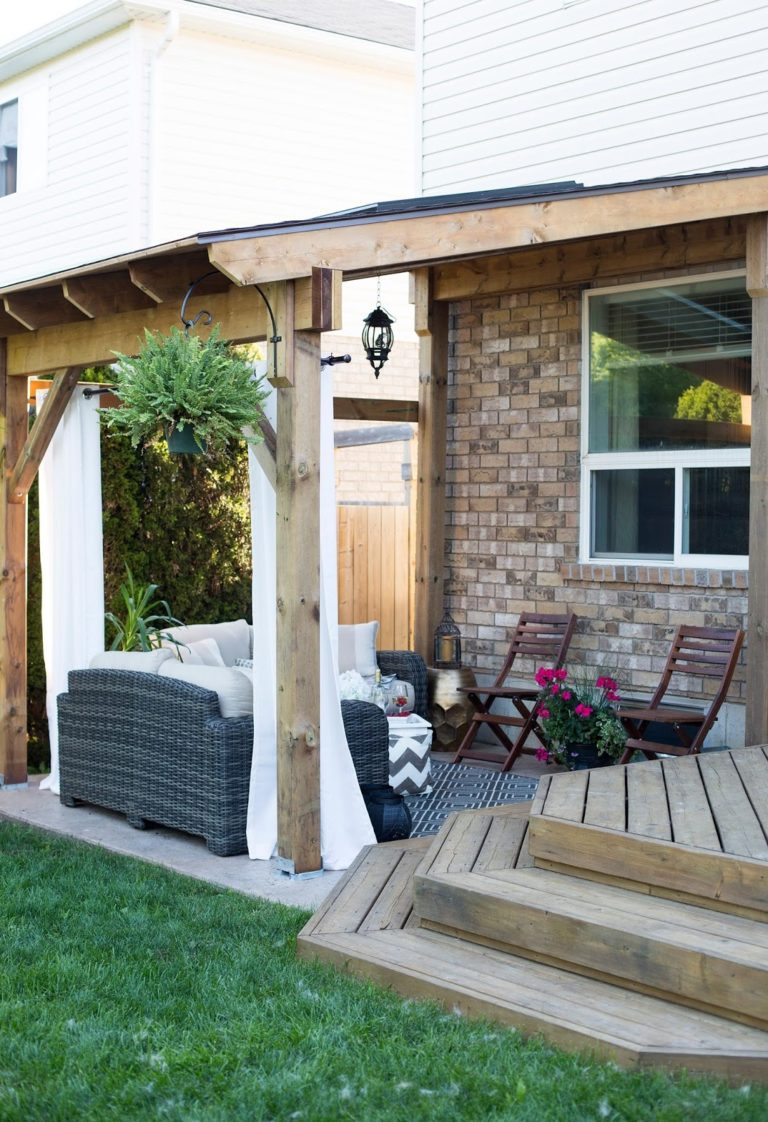
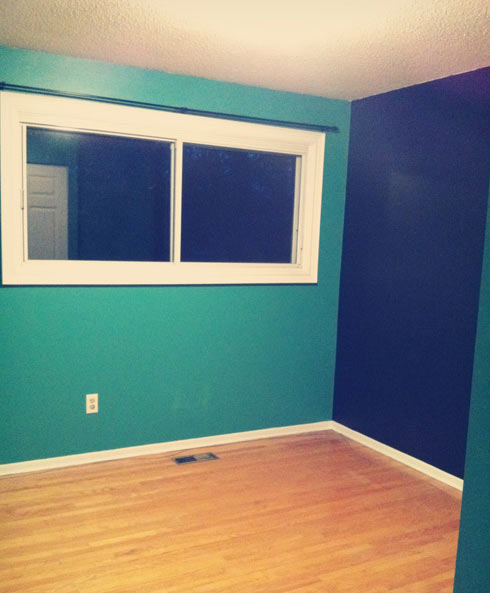
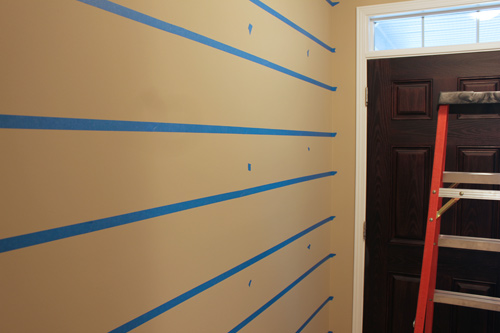
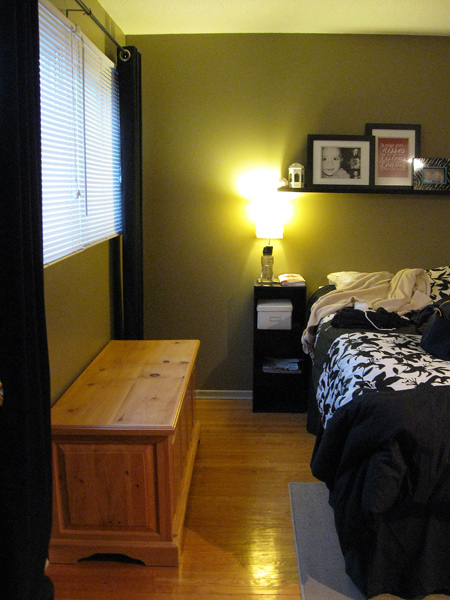
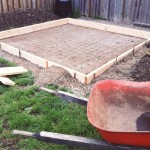
Any chance you remember how much this slab cost you? My husband and I are about to embark on a similar project 🙂
Hi Kim, the total cost to pour this slab was about $550. That includes the delivery of the concrete via a cement truck (we didn't mix this amount ourselves), the forms, the rebar, the rental of the tamper plate, etc. Hope that helps!
Good luck to you and your husband! 🙂
What was the Size of the slab? what X what? I have a 20 X 20 shed? my e-mail address is and the thickness of your slab?
My e-mail address is strubbergj@hotmail.com
Hi Jeff, the slab pictured above is 10×10. It is approximately 8 inches thick around the outside, and 6 inches thick in the middle. We added an extra two inches around the outside to support the weight of the walls for the shed. Hope this answers your question!
Hi, if I’m planning on building a 10×16 shed, how much further out should I extend the the slab?